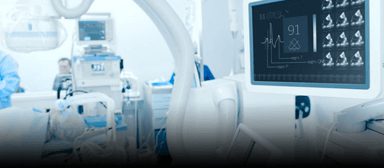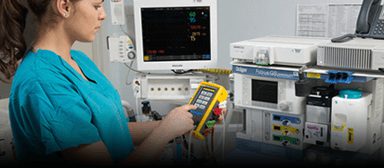Our Medical Safety Testing & Certification Capabilities »
- Product safety compliance in the United States and Canada
- Electrical wheelchairs to ANSI/RESNA/FDA/EN requirements
- FDA devise submissions for FDA clearance
- Complete testing for active implantable devices (ISO 14708)
- Inspections of high-end medical equipment (e.g. MRI and CT scanners) in hospitals
- National Certification Body (NCB) & Certification Body Testing Laboratory (CBTL) testing & certification for Medical Electrical products.
- Medical Device Battery Safety Testing
Related Pages:
- Medical Device Testing & Certification
- Medical EMC Testing
- Medical RFID Susceptibility
- Wheelchair Testing
Your Global Testing Partner for Notified Body Services and Global Approvals »
With 16 laboratories in North America, Europe and Asia Pacific, we offer regulatory compliance expertise and experienced GMP/GLP/ISO 17025 testing to ensure rapid turnaround times with the highest level of service, and most advanced technologies for your analytical chemical, microbiological, biocompatibility, electrical, mechanical and package testing needs.
Our international presence ensures a unique global breadth of harmonized capabilities to solve all of your testing challenges and guide you through the complex regulatory landscape to help you develop the optimal strategy for your medical device testing needs.
Notified Body Services:
Type Examination (Annex III): – EC certificate showing conformity of the Medical Device examined (type) with the essential requirements established in the directive.
EC Verification (Annex IV): – EC certificate that guarantees and declares that the production batch(statistical verification) or each product (individual verification) conforms to the type certified and to the applicable requirements of the directive.
EC Declaration of Conformity: – Guarantee of quality of the manufacturing process or of the product (annexes V-VI), the certificate that guarantees and declares that the quality system, with regard to sterility, is applied and complies with the requirements of the directive.
Other Related Services:
- Chemical / Physical Analysis
- Microbiology & Sterility
- Packaging & Seal Integrity
- Biocompatibility
- Combination Products
What is Risk Management?
ISO 14971 is an international standard for risk management of medical devices and is recognized by the US Food and Drug Administration (FDA), European authorities, Health Canada, the Australia Therapeutic Goods Administration and other regulators as the “de facto” standard for risk management of medical devices. The risk management process is meant to identify, quantify and mitigate risks that may be present in all settings of intended use, reasonably foreseeable misuse and conditions of a product or system. Manufacturers are exclusively responsible for planning, performing and documenting the risk management process. The criteria for identifying potential risks and determining acceptable levels of risk are determined and evaluated by manufacturers to prove acceptable levels of risk.
Why is Risk Management Important?
Compliance with the provisions of ISO 14971 is essential for manufacturers of medical devices seeking regulatory approval in the U.S., the European Union (EU), and other major international markets. Medical device companies MUST have established risk management processes that comply with ISO 14971 in order to fulfill the requirement to implement risk management according to IEC 60601-1:2005. IEC 60601-1-X collateral standards that are now mandatory for compliance with the 60601-1 general standard, also invoke the requirements of ISO 14971 directly or by implication The risk management process IS NOT audited on-site to prove compliance. Instead, compliance to the risk management portion of 60601-1 is evaluated by a certification body by using the reviewing documentation of the risk management process contained in the risk management file.
Essential Performance
Amendment 1 now requires manufacturers to establish specific performance limits, and to evaluate essential performance characteristics under abnormal or fault conditions. In addition to these changes, essential performance is now a test criteria in assessing if a hazard is present after a specific test. Also, manufacturers must declare specific essential performance criteria in the product’s technical description.
Humidity
Humidity testing requirements from IEC 60601-1 Edition 2.0 have been reinstated.
Documentation
A number of documentation requirements for user manuals and instructions for use (IFU) have been added. In addition, electronic versions of all accompanying documentation must apply the usability engineering process as covered in the collateral standard, IEC 60601-1-6, Usability, in determining what information must be presented.
Marking and Labeling
Equipment and accessory labeling must include a unique serial number or lot batch identifier, date of manufacturer or “use-by” date, and manufacturer contact information.
Electrical Hazards
There are a number of requirements related to protections from potential electrical hazards, including defibrillation protection, protective earth and creepage and clearance distances. There are new limits for leakage current testing for functional earth connections. Protective earth testing with a power supply cord is required for devices equipped with appliance inlets. Permanently installed equipment must include a power lockout device if reconnection presents a potential hazard to a user.
Mechanical Hazards
Testing for mechanical hazards related to instability and mobile equipment has been modified to include functional testing.
Temperature Testing
For applied parts, temperature limits have been clarified. For overflow, equipment must be designed to ensure that basic safety and essential performance are maintained at all times.
Programmable Electrical Medical Systems (PEMS)
Medical Device Software Life Cycle Processes, which are applicable to equipment and systems whose operation depends on software or any programmable element (also known as PEMS). In addition, Amendment 1 incorporates validation requirements for equipment connected to a network.
Construction
For mechanical strength, “basic safety and essential performance” replaces “unacceptable risk.” Requirements for the construction of transformers have reverted to IEC 60601-1 Edition 2.0. Lithium batteries must comply with IEC 60086-4 (primary cells) and IEC 62133 (secondary cells).






